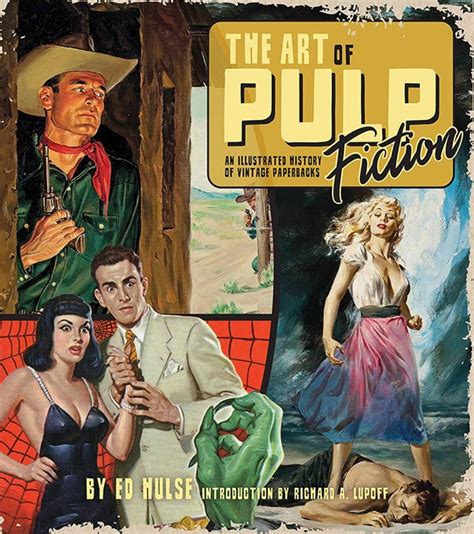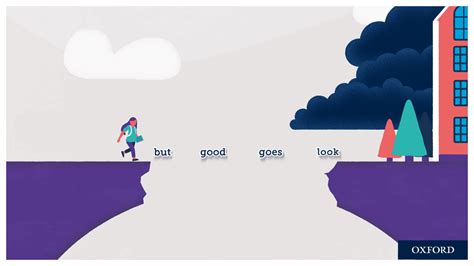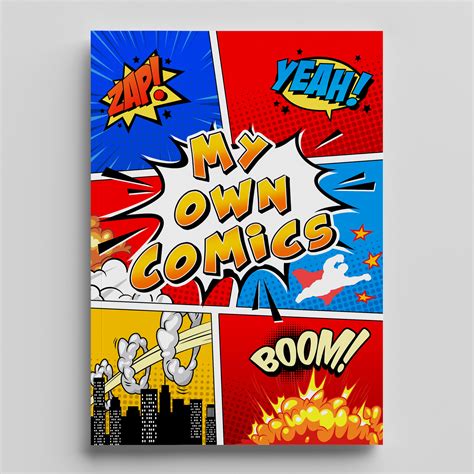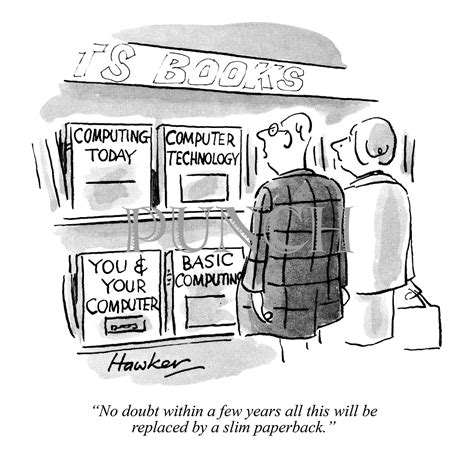Embark on a journey into a mesmerizing realm where words and pictures intertwine, where heroes come to life, and where imagination knows no bounds. Welcome to the captivating world of comic books, a medium that has transcended generations and captivated the hearts of millions.
Within the pages of these visually stunning masterpieces, stories unfold that transport us to fascinating universes filled with awe-inspiring characters, epic battles, and tales of triumph and tragedy. As we turn each page, we become avid adventurers, unraveling mysteries, exploring far-off dimensions, and delving into the depths of human emotions.
Comic books, with their unique blend of art and storytelling, have the power to ignite our imagination and transport us into extraordinary realms. The bold strokes of the artists, the vibrant colors, and the meticulously crafted narratives all work harmoniously to immerse us in a world where anything is possible.
Throughout history, comic books have served as mirrors to our society, reflecting the hopes, dreams, fears, and struggles of the times. From the Golden Age classics to the modern masterpieces, comic books have not only entertained but also sparked conversations, challenged norms, and inspired social change.
So, join us as we embark on a journey of discovery through the vast tapestry of comic books. From the caped crusaders of the pages, to the untold stories waiting to be unraveled, to the vibrant community that surrounds this beloved medium – let your imagination soar as we dive into a world where heroes are born, legacies are forged, and dreams come to life.
The Evolution of Comic Books: From Pulp Fiction to Graphic Novels

Delve into the rich history of the comic book medium, tracing its evolution from its humble beginnings as pulp fiction to the sophisticated art form known as graphic novels today. Discover the diverse range of storytelling techniques and genres that have captivated audiences for decades, and witness the transformation of comic books from disposable entertainment to revered works of literature.
The roots of comic books can be traced back to the early 20th century when they emerged as a popular form of entertainment in the form of pulp magazines. These inexpensive publications, filled with thrilling tales and captivating visuals, catered to a wide audience, becoming a beloved pastime for both young and old. The combination of compelling narratives and colorful illustrations laid the foundation for what would become the modern comic book.
As time went on, comic books began to evolve and adapt. The introduction of superheroes, such as Superman and Batman, in the late 1930s and early 1940s marked a turning point in the medium's history, providing readers with larger-than-life characters and epic storylines to follow. These iconic heroes became symbols of hope, inspiring generations to believe in the power of justice and the triumph of good over evil.
- Superheroes were not the only genre that thrived in the comic book industry. Detective stories, science fiction tales, war dramas, and romance comics all found their place on the colorful pages.
- Over time, the medium continued to evolve, pushing the boundaries of storytelling and pushing the limits of imagination.
- In the 1980s, the term "graphic novel" emerged, representing a new wave of more mature and complex narratives that tackled a wide range of social and political issues.
- Today, graphic novels have gained mainstream recognition as a legitimate form of literature, transcending age and genre boundaries.
So, join us on this journey through the history of comic books, as we explore the artistry, innovation, and cultural impact that have shaped this beloved medium over the years. From its humble beginnings to its present-day status as a powerful storytelling medium, comic books continue to capture our imaginations and inspire us to see the world through different eyes.
Exploring Different Genres: Superheroes, Sci-Fi, and Fantasy
In this section, we delve into the diverse realms of superheroes, science fiction, and fantasy within the captivating world of comic books. As we embark on this exploration, we encounter a multitude of captivating narratives, vibrant characters, and imaginative settings.
Superheroes, often depicted with extraordinary powers and abilities, are the epitome of strength, justice, and heroism. These characters inspire readers as they fight against injustice and protect the innocent. From iconic heroes like Superman and Spider-Man to lesser-known figures, the superhero genre never fails to captivate our imaginations.
Within the realm of science fiction, we traverse otherworldly landscapes, encounter advanced technology, and witness the fusion of imagination and scientific concepts. Sci-fi comics take us on exhilarating journeys through time and space, exploring the possibilities of extraterrestrial life, futuristic societies, and mind-bending concepts like time travel and artificial intelligence.
The fantasy genre, on the other hand, transports us to magical realms where mythical creatures roam, enchanted objects possess extraordinary powers, and heroes embark on epic quests. These comics immerse us in enchanting worlds filled with wizards, dragons, elves, and battles between good and evil.
As we uncover these different genres, we discover the rich tapestry of storytelling and artistry that lies within the comic book medium. Each genre offers a unique and imaginative experience, beckoning readers to explore new realms, question the limits of reality, and ignite their own creativity.
| Genre | Overview |
|---|---|
| Superheroes | The superhero genre showcases characters with extraordinary powers and abilities who fight against injustice and protect the innocent. |
| Science Fiction | Sci-fi comics transport readers to otherworldly landscapes and explore concepts like time travel, advanced technology, and extraterrestrial life. |
| Fantasy | The fantasy genre immerses readers in magical realms filled with mythical creatures, epic quests, and battles between good and evil. |
The Power of Narrative: Bridging the Gap Between Words and Images

In the realm of comic books, storytelling takes on a unique form of expression that seamlessly combines the written word with visual imagery. Through a carefully crafted fusion of text and art, comic books have the ability to captivate readers and transport them into fantastical worlds, where vivid storytelling becomes an immersive experience.
At the heart of every comic book lies the art of storytelling, which serves as the foundation for the captivating narratives that unfold within its pages. Through the skillful integration of words and images, comic books have the power to convey emotions, establish distinct characters, and unfold complex plots in a visually engaging and compelling manner.
Unlike traditional forms of storytelling, where words alone bear the responsibility of conveying the narrative, comics employ a unique visual language that enhances the storytelling experience. Comic book artists utilize various techniques, such as panel layout, framing, and composition, to guide the reader's eye and create a sense of rhythm and pace within the story.
Additionally, the interplay between words and images in comic books allows for the exploration of multiple perspectives and layers of meaning. By combining dialogue, captions, and thought bubbles with visuals, comic book creators can convey both explicit and implicit information, deepening the reader's understanding of the story and its characters.
- Moreover, the use of visual symbolism in comic books adds another dimension to the storytelling process. Through the careful placement of visual motifs and recurring imagery, comic book artists can imbue their narratives with deeper thematic significance, inviting readers to interpret and uncover hidden messages.
- Furthermore, the dynamic nature of comic book storytelling enables creators to experiment with the passage of time. By manipulating the layout and sequencing of panels, comic book artists can convey the fluidity of time, allowing readers to experience the story's events in a nonlinear fashion.
- Ultimately, the art of storytelling in comic books is a collaborative effort that relies on the seamless integration of words and images. It is an art form that celebrates the ability to stimulate the imagination and ignite a sense of wonder, inviting readers to embark on a journey through the limitless realms of storytelling.
In conclusion, comic books represent a powerful medium that harnesses the art of storytelling to create immersive and captivating narratives. By combining words and images in a harmonious dance, comic books provide a unique avenue for readers to unleash their imagination and experience the magic of storytelling in a visually stunning manner.
Exploring the Legends: From Superman to Spider-Man
In the mesmerizing universe of comic books, an array of iconic characters has astounded readers with their unique abilities and captivating storylines. From the mighty Superman to the friendly neighborhood Spider-Man, these legendary figures have become an integral part of popular culture, inspiring generations with their indomitable spirit and extraordinary talents.
Superheroes like Superman, with his immense strength and ability to fly, symbolize hope and the desire for justice. His iconic red and blue suit, highlighted by the emblematic "S" shield, has become an enduring symbol of bravery and heroism.
On the other hand, Spider-Man, known for his incredible agility and wall-crawling abilities, embodies the idea that anyone can be a hero, regardless of their background or circumstances. Peter Parker's alter ego serves as a relatable figure, navigating daily struggles while juggling the responsibilities of being a superhero.
Their adventures, filled with exhilarating battles against formidable villains, take readers on thrilling journeys through imaginative worlds. They face challenges that test not only their physical prowess but also their moral compass, providing thought-provoking narratives that resonate with audiences of all ages.
Beyond their superhuman abilities, these characters delve into complex emotions, making them more than just action figures on a page. Their vulnerabilities and personal growth make them relatable and allow readers to connect with them on a deeper level, fostering a sense of empathy and understanding.
Through comic books, these characters have transcended their ink-and-paper origins to occupy a significant place in popular culture. Their enduring popularity has led to adaptations in films, television shows, and merchandise, further solidifying their status as cultural icons.
Whether it's the Last Son of Krypton or your friendly neighborhood web-slinger, the iconic characters of the comic book world continue to captivate imaginations, leave an indelible mark on society, and inspire us to believe in the extraordinary.
Unleash Your Passion for Comic Book Collecting: An Exciting Pursuit for Enthusiastic Fans

For those who possess a fervent ardor for all things related to the world of graphic novels, comic book collecting presents an exhilarating hobby that allows individuals to delve into a captivating universe of art, storytelling, and imagination. This enthralling pursuit offers not only a means to acquire rare and cherished editions but also provides an opportunity to bond with fellow enthusiasts who share a similar passion for the vibrant and diverse realm of comics.
Discovering a Treasure Trove
Delving into the realm of comic book collecting opens up a doorway to fascinating narratives, stunning visuals, and iconic characters. By seeking out and acquiring various editions, fans can unearth hidden gems that take them on emotional journeys, transporting them to other worlds and times. Each find becomes a treasure, cherished for its unique qualities and the nostalgic connections it evokes.
Preserving History and Nurturing Appreciation
Comic books have not only transformed the literary landscape but have also played a significant role in shaping popular culture. They have paved the way for timeless superheroes, sensational storylines, and extraordinary artwork. Engaging in comic book collecting allows enthusiasts to preserve these valuable pieces of history, ensuring that the impact of these influential publications is not forgotten. By actively participating in this hobby, fans contribute to the preservation of an important artistic and literary medium.
Cultivating a Sense of Community
Comic book collecting is more than just a solitary pastime; it is a vibrant community that unites like-minded individuals who appreciate the power of storytelling and visual art. By attending conventions, joining online forums, or engaging in local meetups, collectors can forge connections, exchange knowledge, and share their enthusiasm with other avid fans. This sense of community fosters a supportive environment where everyone's unique perspectives and interests are celebrated, and the joy of comic book collecting is magnified.
An Investment in Joy and Inspiration
While the thrill of acquiring rare editions and valuable pieces is undeniably enticing, the true allure of comic book collecting lies in the joyful escapism and boundless inspiration it provides. Holding a beautifully illustrated comic in one's hands, immersing oneself in its gripping narrative, and marveling at the artistic craftsmanship can transport individuals to a realm where anything is possible. The stories found within the pages of these cherished collectibles awaken the imagination, ignite creativity, and ignite a passion for the limitless possibilities of the world.
Embarking on the thrilling journey of comic book collecting unlocks a universe of excitement, nostalgia, and artistic wonder. It is a hobby that not only satiates the hunger for captivating narratives and dazzling visuals but also cultivates a vibrant community and preserves a rich literary and artistic heritage. So, embrace the thrill and immerse yourself in the awe-inspiring world of comic book collecting - a hobby that truly captivates the hearts and minds of devoted fans.
The Influence of Graphic Novels on Popular Culture and Society
Graphic novels have had a profound impact on the way we perceive and engage with popular culture, leaving an indelible mark on society as a whole. These visually captivating narratives have successfully transcended the boundaries of traditional storytelling, captivating audiences from all walks of life. By seamlessly blending compelling visuals with thought-provoking narratives, graphic novels have become a powerful medium for expression, sparking discussions and challenging societal norms.
One of the most striking consequences of graphic novels' popularity is their ability to bring marginalized voices to the forefront. Through the graphic novel format, artists and writers have been able to tackle sensitive and often taboo subjects, effectively conveying diverse experiences and shedding light on underrepresented communities. This newfound ability to give voice to the voiceless has paved the way for meaningful conversations and increased empathy within society.
- Breaking the Boundaries: Graphic novels have shattered the confines of traditional storytelling by merging art and literature, creating a harmonious blend of visual aesthetics and narrative depth. The result is a unique storytelling experience that captures the imagination and emotions of readers.
- Inspiring the Film Industry: The success of graphic novels has not been limited to the world of books. Their influence has spilled over into the film industry, with many popular comic book series adapted into blockbuster movies. These film adaptations further contribute to the mainstream recognition and appreciation of graphic novels, solidifying their place in pop culture.
- Reshaping Perceptions: Graphic novels have the power to challenge societal norms and reshape popular perceptions. By addressing complex themes such as social justice, mental health, and identity, these narratives encourage critical thinking and promote a deeper understanding of diverse perspectives.
- A Platform for Social Commentary: Through their distinct storytelling approach, graphic novels have become a platform for social commentary. Artists and writers often use their work to shine a light on pertinent issues, highlighting social injustices and sparking conversations that can lead to positive change.
- Cultivating Creativity: The imaginative visuals and intricate narratives present in graphic novels have sparked the creativity of countless individuals. From aspiring artists to budding writers, the medium serves as a source of inspiration, nurturing a new generation of storytellers and artists.
The impact of graphic novels on popular culture and society has been far-reaching, transcending their status as mere entertainment. They have given voice to the marginalized, challenged societal norms, and inspired creative minds. As this medium continues to evolve and captivate audiences, the influence of graphic novels on our collective imagination and the way we perceive the world will undoubtedly endure.
Comic Books as a Medium for Social Commentary and Representation

Exploring the depths of the graphic storytelling realm, comic books offer a unique medium that goes beyond mere entertainment. This section delves into the role of comic books as a powerful tool for social commentary and representation.
Through vibrant illustrations and compelling narratives, comic books have the ability to weave together complex stories that serve as a reflection of society. Whether addressing societal issues such as inequality, discrimination, or political unrest, or shedding light on personal experiences and marginalized communities, comics serve as a platform to highlight and provoke discussions on crucial topics.
Comic books enable creators to tackle sensitive subjects in a visually engaging manner, capturing emotions and experiences that may otherwise be difficult to convey. By harnessing the power of visual storytelling, comics can evoke empathy and create a sense of connection between the reader and the characters, ultimately fostering a deeper understanding of the issues being explored.
Moreover, comic books possess the ability to challenge stereotypes and promote inclusivity. By featuring diverse characters and perspectives, comics represent a vast range of identities and experiences. They have the power to break free from traditional narratives and showcase underrepresented voices, demonstrating the importance of representation and diversity in the medium. | In addition to addressing social issues, comic books often serve as a commentary on the human condition. They delve into the complexities of morality, power dynamics, and the consequences of our actions. By presenting thought-provoking scenarios and moral dilemmas, comics encourage readers to contemplate ethical choices and reflect on their own beliefs and values. |
In conclusion, comic books transcend their role as mere entertainment, becoming a significant medium for social commentary and representation. Through their exceptional storytelling capabilities, they can bring attention to pressing societal issues, amplify marginalized voices, challenge stereotypes, and provide a platform for contemplation and self-reflection.
FAQ
What are comic books?
Comic books are a form of sequential storytelling that combines text and illustrations. They often feature action-packed narratives, colorful graphics, and dialogue in speech bubbles. They can cover various genres such as superhero stories, fantasy adventures, science fiction, and comedy.
How can comic books help unleash my imagination?
Comic books have the power to ignite your imagination by presenting visually captivating stories that allow you to immerse yourself in different worlds and characters. The combination of artwork and dialogue prompts you to fill in the gaps and create your own interpretations of the story. This imaginative process can extend beyond reading and inspire you to engage in creative activities such as writing fanfiction or creating your own comic strips.
Are comic books only for children?
No, comic books are not just for children. Although traditionally seen as entertainment for younger audiences, the comic book industry has evolved to cater to readers of all ages. There are comic books targeted at adults that explore complex themes and mature storytelling. From gritty crime dramas to thought-provoking graphic novels, comic books have expanded their reach and appeal to a wide range of readers.



